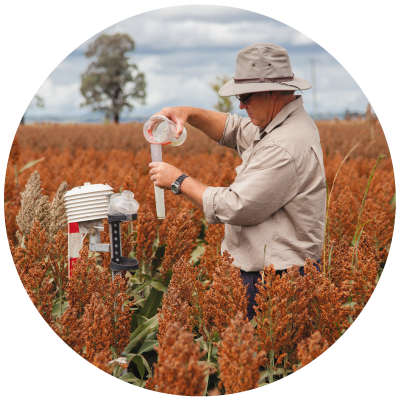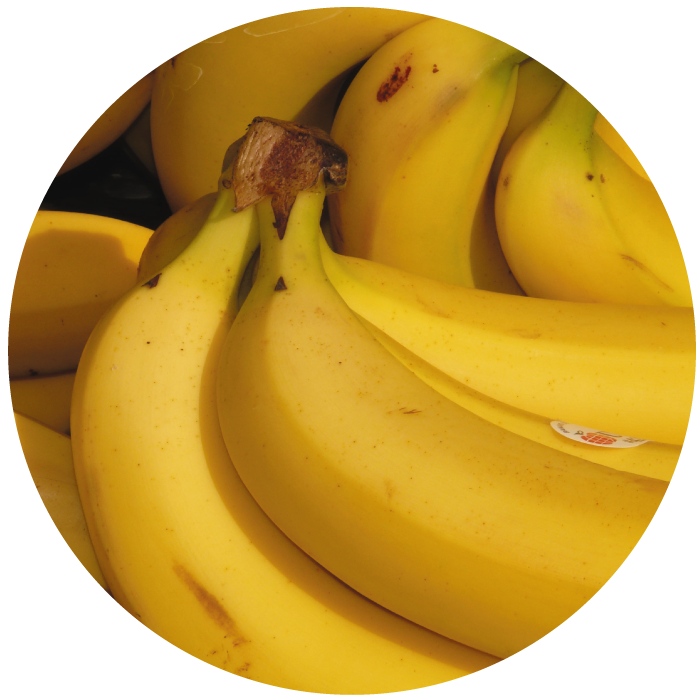Queensland possesses a world-class research and development capability. UQ is rated the number one agricultural research institution in Australia, and is among the world’s top five institutions in the 2017 NTU rankings. UQ and the Queensland government’s investment in QAAFI builds upon the capabilities of both organisations, to deliver substantial returns on investment across Queensland’s agricultural industries.

Investment in sorghum:
Grain sorghum is a major summer crop, produced at the moment largely as a feedgrain for the Australian domestic market – although new markets for Australian sorghum are opening up in China for use in fermentation of alcoholic spirit, and in the gluten-free human food market.
Genetics is one of the principal factors contributing to the current upward trend evident in Australian grain sorghum yields.
The Queensland Government, along with the GRDC, the Department of Primary Industry in New South Wales and UQ, have for the past 20 years supported improvement and innovation in a sorghum pre-breeding program run out of Hermitage Research Facility.
The cost-benefits of the research mainly stem from yield gains, estimated at 2.1 per cent a year. This estimate is based on Australian Bureau of Agricultural and Resource Economics and Sciences (ABARES) data that shows average sorghum yields increased from about 2 to 3.5 tonnes per hectare between 1996 and 2015.
The pre-breeding program has licensed nearly 3000 sorghum lines to the international sorghum industry since 1989, which is around 10 times the amount of plant breeding material than in all the other public sorghum breeding programs around the world – combined.
The economic analysis of this investment over this period which totalled $78.4 million shows this has delivered a gross gain of $696.5 million to Australian sorghum growers.
This equates to a cost-benefit of $8.90 for every $1 invested by the research funders.
 Investment in beef:
Investment in beef:
The Queensland Government, QAAFI and Meat & Livestock Australia via the MLA Donor Company will invest $6.2 million over the period of years ending June 2017 to June 2021 to improve the genetic rate of gain of beef cattle in the northern beef industry.
The overall aim of the UQ project is to accelerate genetic gain for increasing productivity in northern Australia beef cattle herds to improve profitability of Australian northern beef enterprises. Other benefits may include reduced methane emissions, increased regional employment and incomes, and continuous improvements in animal welfare – for example, to accelerate breeding for hornless or polled cattle.
 Banana biosecurity:
Banana biosecurity:
The Australian banana industry is a major horticultural industry with an annual farm gate value of around $600 million. It is Australia’s largest single horticultural industry by farm gate value.
Banana production in Australia is dominated by areas in the north of Queensland with other significant areas in south east Queensland and northern New South Wales. However, the banana industry worldwide is subject to serious disease events, with Australia being no exception.
A focus for investment by the Queensland Government into the banana industry has been on banana disease detection, diagnostics and capacity to respond to disease outbreaks.
The impacts of investments made by the University of Queensland, the Queensland Department of Agriculture and Fisheries, Horticulture Innovation Australia Limited, and QAAFI over the period 2007 to 2017 has delivered improved diagnostics for several key banana diseases as well as ongoing surveillance, testing and technical capacity and advice that has maintained (and potentially improved) industry capacity to detect and respond to disease outbreaks in the Australian banana industry.
While it is difficult to quantify the range of impacts of this investment in protecting Queensland’s banana industry, the total investment of approximately $9.2 million (present value terms) has been estimated to produce total net benefits of approximately $70.8 million (present value terms) providing a benefit-cost ratio of approximately $7.7 to $1 of research investment funding.



